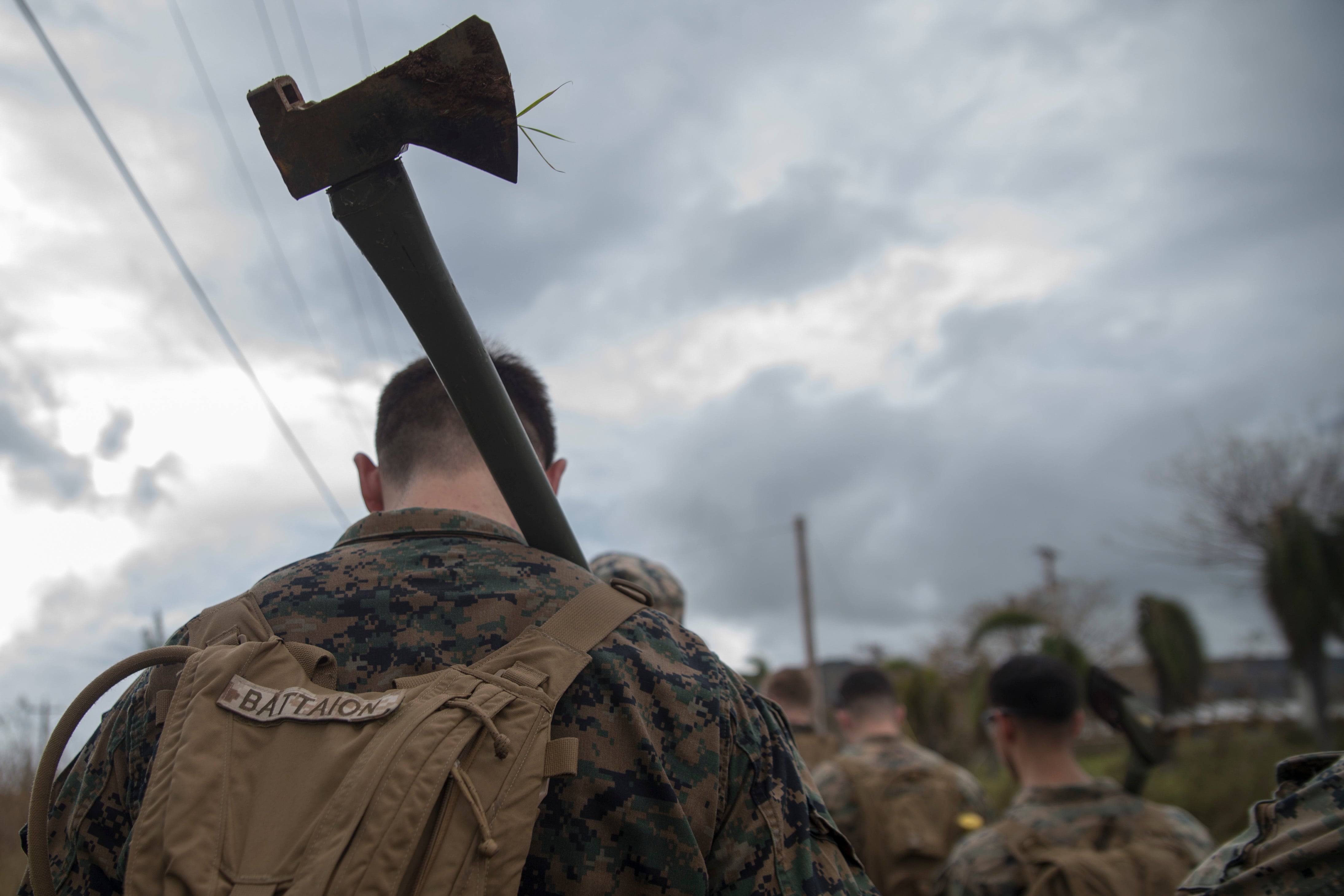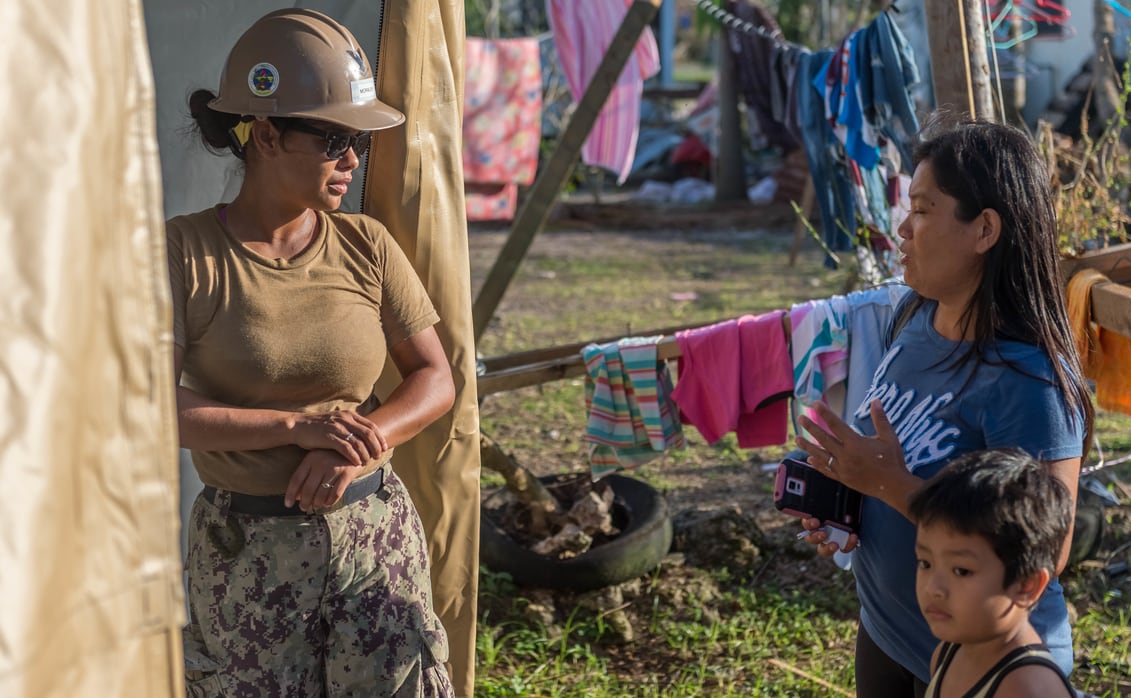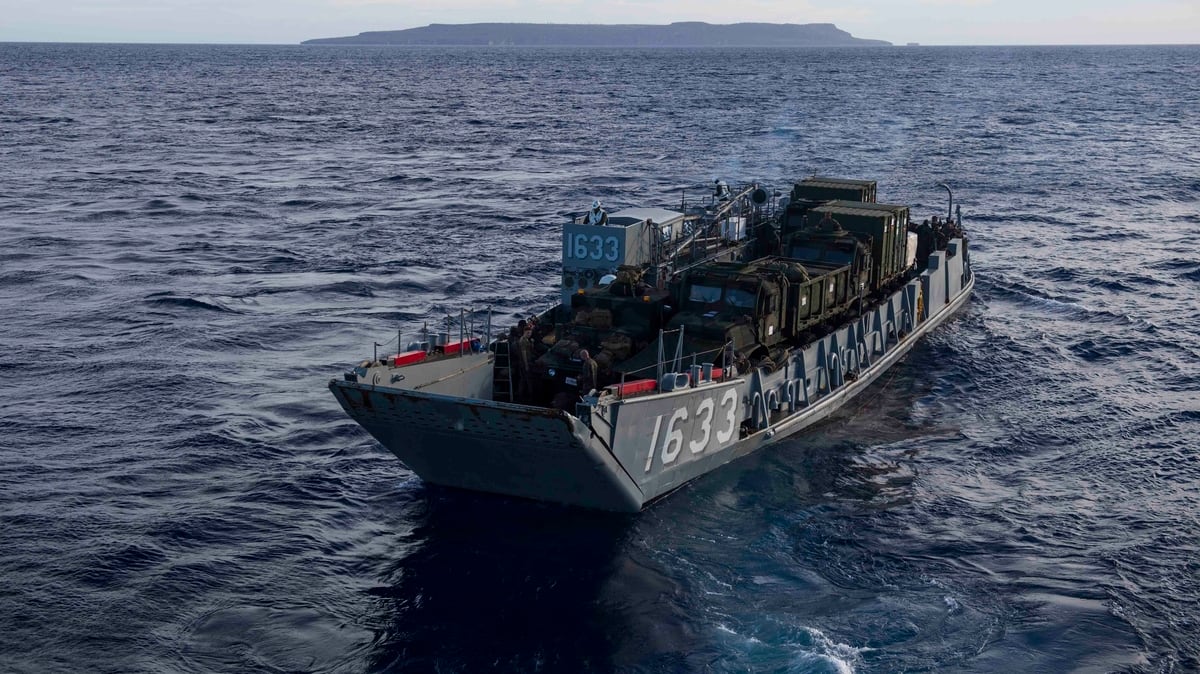In the wake of devastating Super Typhoon Yutu, the Navy diverted the amphibious warship Ashland, ordered her crew to embark the 31st Marine Expeditionary Unit on Okinawa, and then rushed south to save the ravaged island of Tinian.
On Oct. 25, the Category 5 storm tore across the southern slab of Saipan but speared directly into Tinian, part of the Commonwealth of the Northern Marianas Islands.
Operating about 100 miles away out of Guam, Coast Guard cutters, the “Island Knights” of Helicopter Sea Combat Squadron 25 and detachment of Seabees immediately began helping thousands of Americans without electricity, water or shelter. But far more aid was needed, so the 7th Fleet in Japan took the rescue call.
Rear Adm. Brad Cooper, the commander of Amphibious Force 7th Fleet, directed the Ashland to return to the Marianas. It wasn’t an unknown island on the map. Cooper, the Ashland and the MEU had just left.
Cooper led the military’s recovery operations on the nearby island of Rota after Typhoon Mangkhut walloped it on Sept. 10.
“Having seen the extreme damage caused by the typhoon on both Tinian and Saipan, I couldn’t be prouder of all the work that our sailors and Marines are doing to help our fellow American citizens,” said Cooper in a Saturday email to Navy Times.
RELATED

Yutu’s devastation was far worse, but the Marines on the ground say ongoing relief efforts are helping.
“The people of Tinian are very resilient. The super typhoon had devastating effects on the island,” said 2nd Lt. Maxwell Bennett, spokesman for the 31st MEU, in a Saturday night statement to Navy Times. "Landscape and the infrastructure had been ripped from the foundations and strewn everywhere. The majority of power lines across the island had been shattered and toppled.
"However, the landscape has completely changed over the course of five days of debris clean-up. The roads are cleared, people now have access to clean water and gasoline. There has been a dramatic change in atmosphere as well, people are beginning to go back outside and utilize their roads again. Those without homes have already started receiving temporary tents for shelter. Overall, the clean-up process has drastically improved the living conditions for every person living on Tinian.

The MEU’s commander, Col. Robert “Bams” Brodie, is helming all Department of Defense efforts on Tinian, including coordinating with Naval Mobile Construction Battalion 1, the Pacific Air Forces and personnel from the Army Corps of Engineers on the island.
One of his best tools is the Ashland, the eighth and the last of the Whidbey Island-class dock landing ships to be commissioned 26 years ago.
Her two landing craft utility vessels from Navy Beach Unit 7 already have delivered almost 50 vehicles to the 31st MEU, according to Capt. Jim McGovern, the commodore for Amphibious Squadron 11.
The Ashland will now start "serving as a lily pad to refuel helicopters, extending their range and reducing transit times” while also ferrying equipment for the Guam Army National Guard, he added.

If needed, the warship can make potable water, too. It all depends on what the Federal Emergency Management Agency and Commonwealth officials ask the Navy to provide.
“This is an important mission and we are privileged to be supporting our fellow citizens,” McGovern said.
Prine came to Navy Times after stints at the San Diego Union-Tribune and Pittsburgh Tribune-Review. He served in the Marine Corps and the Pennsylvania Army National Guard. His awards include the Joseph Galloway Award for Distinguished Reporting on the military, a first prize from Investigative Reporters & Editors and the Combat Infantryman Badge.





